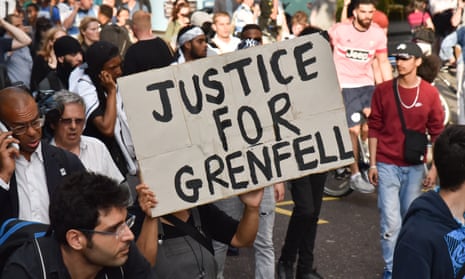Margaret Atwood wrote in an introduction to Brave New World that Aldous Huxley’s dystopian novel had been inspired by a trip to America that left him “frightened by mass consumerism, its group mentality and its vulgarities”. Just think what Huxley would have made of the internet, with its 24/7 pornography and shopping and groupthink so strong that faith in information sources is dwindling.
There are many reasons why dystopian novels appear to be having a moment in 2017. Amid catastrophe and political chaos, Brave New World, 1984 and Atwood’s own The Handmaid’s Tale have all reached the top of the Amazon charts on both sides of the Atlantic in the past year. A TV adaptation of Atwood’s story of a totalitarian, misogynistic state is being keenly watched for echoes of our own world by more than 2 million people a week in the UK on Channel 4 and on the streaming service Hulu in the US.
“When they blamed terrorists and suspended the constitution, we didn’t wake up,” said the narrator of The Handmaid’s Tale in the episode just before Theresa May offered to take her frustration over the Manchester and London Bridge attacks out on human rights legislation.
The appalling tragedy of the Grenfell Tower fire last week illuminated many of the worst divides in 21st-century Britain and highlighted the extent of social and economic inequality in its capital city. It also highlighted a lack of trust in a media too often felt to be on the side of the wealthy and the powerful against the poor and powerless.
“Why did they not come here before?” shouted one man at Channel 4’s Jon Snow, who found himself surrounded by residents who had had to watch people burn before getting the chance to air their grievances on national television.
Anger over the lack of official help and fear that improvements would be delayed by an inquiry turned to suspicion that the media was under-reporting the number of dead. Lily Allen accused the media of being complicit. Skwawkbox, a blog that says it aims to “present information and analysis that will rarely make it into the mainstream media”, first ran and then rescinded a story claiming that an official DA notice had been issued to prevent the media from reporting the facts.
On its front page on Saturday, the Telegraph accused leftwing blogs of ramping up tension, under the headline “Corbyn supporters spread ‘fake news’ about Grenfell Tower death toll”. The report suggested the allegations should be the subject of an ongoing parliamentary inquiry into “fake news”.
Really? Forget the allegations that Sun reporters are up to very old tricks by lying to get into hospital wards or even the complaints against the Mail that it seemed to blame one man’s failure to buy a new fridge for dangerous housing, this cannot be the way for mainstream media to show it cares for people too long ignored and voiceless.
It may not be the most useful question amid such death and despair, but if the media is to do its job and if we are to avoid losing a vital part of democracy, we should at least ask what counts as fake news.
Given the failure of algorithmic curation to differentiate between truth and lies, it is surely anything that acts as a deliberate, viral spreading of misinformation for commercial or political ends. The story about Hillary Clinton and thousands of bogus votes, made up by a 23-year-old who earned $5,000 for doing so, was as fake and fictional as anything Huxley wrote.
In 1984, the truth was whatever Big Brother wanted it to be. In 2017, the truth is whatever Trump and other politicians want it to be, with screams of “fake news” when it isn’t.
But mistakes, if made honestly, are not fake news. Admittedly, in a world in which rumours can fly around the world before the truth wakes up, working out what is honest takes time. Which is why news organisations must wait to verify official information before confirming something like the numbers of those dead.
There are signs that a growing number of the public are losing trust in the media. A YouGov survey of 1,600 British adults this year found that 61% agreed the term “fake news” should be used to describe “news organisations that twist their reporting to fit their political viewpoint or agenda”.
In the UK, where much of the press takes pride in being opinionated, this view is problematic. (It is also an issue in the US, where last week the broadcaster Fox News dropped its obviously untrue “Fair and balanced” slogan for “Most watched, most trusted.”)
In an interview this year, Atwood said: “We are in an age of yet more autocratic regimes, thought police, double-speak and fake news … When you have total control of the news system, you can really have fake news.”
The internet, which promised thousands of blooming flowers and the wisdom of crowds, has in recent years looked too much like a perfect mechanism for supra-national tax dodgers to grow rich.
A plethora of news and information sources online may make dire dystopian warnings seem premature. Yet we have possibly spent the early years of the internet so high on the excitements it offers – social media soma – that we forgot to worry about the potential side-effects, such as how fake news and bad behaviour can erode trust in the media.
Democracies depend on an informed public, totalitarian regimes on fake news. Atwood described Huxley’s vision – of people being kept compliant by drugs, sex and entertainment – as one in which “everything is available, nothing has any meaning”. No wonder the best dystopian novels and their authors are offering such a warning for our times.
Powerful or powerless Sun?
So was it the Sun what hung it? With so much of the print media supporting the Conservatives, why did the election not result in a strong win for Theresa May, if not a generation of Tory rule?
All those who considered the surprise victory of Brexiteers in 2016 as a sign that there was fight left in the old print dog yet appeared to turn full circle almost a year later. The about-turn prompted the Sun’s Westminster correspondent, responsible for many anti-Corbyn stories, to urge “lefties” to choose just one view of the “evil rightwing papers”: were they all-powerful or powerless?
2016: BOO, evil right wing papers swung Brexit. Howl.
— Harry Cole (@MrHarryCole) June 15, 2017
2017: LOL, evil right wing papers have no power over voters.
Choose one, lefties.
Yet to choose one, while tempting for all columnists, would be to oversimplify an issue that has long bedevilled British politics.
According to research by the UK Press Gazette, the total weekly readership for all four pro-Tory titles – the Sun, the Mail, the Telegraph and the Express – is 8.7m, which is less than a fifth of the 47 million eligible voters. Yet online numbers are far bigger and the readership figures do not reflect the print media’s power in a hall of mirrors in which the front pages are reflected on the TV news and online.
During last year’s referendum, a simple yes/no vote on a hugely complicated question, fears over immigration were splashed onto often misleading tabloid front pages – “Let Us In: We’re from Europe” among them. An ebullient Sun editor sent me a text less than an hour after the victory for leave was declared, crowing: “So much for the waning power of the print media.”
This year’s election was different for many reasons, partly that a far higher number of young people voted, more than 60% of whom backed Labour. For these young voters, leftwing social media stars such as Captain Ska or websites from Novara to the London Economic and the Canary offered a viewpoint more likely to chime with their own. In with the new and out with the old.
And yet the fact that 30% of the Sun’s 1.6 million readers voted Labour, according to YouGov analysis, could be seen as evidence that its constant pounding of Corbyn had no effect. In 2015, 24% of Sun readers voted for Ed Miliband.
Labour’s upswing was largely due to the decline of Ukip, which was backed by 19% of Sun readers two years ago and 3% in June. While many of these voters switched to the Conservatives, backed by 59% of Sun readers, a significant number backed Corbyn on the same day his head appeared in a dustbin under the slightly sad punning headline: “Don’t chuck Britain in the COR-BIN.”
The Sun and the Mail’s coverage of Labour was almost universally negative. Evidence from Loughborough University suggests positive news about May’s campaign diminished after the launch of an unpopular manifesto.
Labour may have shrugged off the attacks with the help of the online media but such a high percentage of swing voters means the Sun will continue to have power over the political system for a while to come, whatever we think of it. The Sun may no longer have the power to win it but, for the time being at least, it could still swing it.

